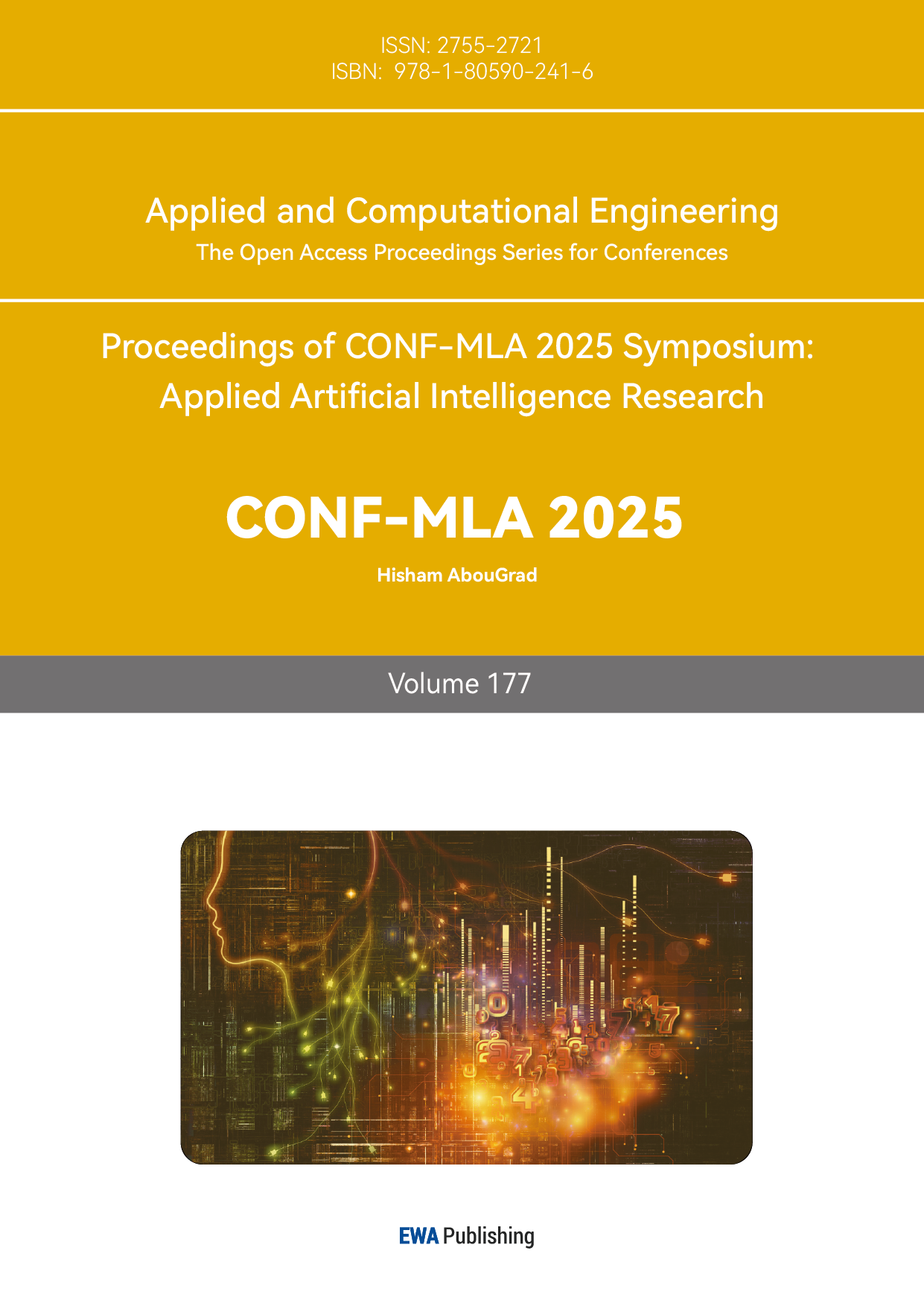References
[1]. Sirovich L, Kirby M.Low-dimensional procedure for the characterization of human faces [J].Journal of the Optical Society of America A, Optics and Image Science, 1987,4 (3):519-524.
[2]. Turk M.A., Pentland A.P.Face recognition using eigenface [J].journal of cognitive neuroscience, 2012, 3(1): 71-86.
[3]. Zhao W, Chellappa R, Phillips PJ, Rosenfeld A (2003) Face recognition: A literature survey. ACM comput surv (CSUR) 35(4): 399-458
[4]. Y. Feng, F. Wu, X. Shao, et al. Joint 3d face reconstruction and dense alignment with position map regression network [C]. ECCV, 2018, 534-551
[5]. T. Ahonen, A. Hadid, M. Pietikäinen. Face recognition with local binary patterns [C]. ECCV, 2004, 469-481
[6]. S. L. Fernandes and G. J. Bala, "A Study on Face Recognition Under Facial Expression Variation and Occlusion, " in Proc. Int. Conf. Soft Computing Systems, Advances in Intelligent Systems and Computing, vol. 397, pp. 371–377, Springer, 2016. doi: 10.1007/978-81-322-2671-0_35.
[7]. Taheri S, Patel VM et al (2013) Component based recognition of faces and facial expressions. Affective Comput 4(4): 360–371
[8]. Zhang, L., Yang, M., Feng, X., Ma, Y., & Zhang, D. (2011). Collaborative representation based classification for face recognition. Technical Report, The Hong Kong Polytechnic University.
[9]. Zhang, L., Yang, M., & Feng, X. (2011). Sparse representation or collaborative representation: Which helps face recognition? In Proceedings of the IEEE International Conference on Computer Vision (ICCV) (pp. 471–478). IEEE.
[10]. Zeng, D., Veldhuis, R. N. J., & Spreeuwers, L. J. (2020).A survey of face recognition techniques under occlusion. arXiv preprint arXiv: 2006.11366.
[11]. Zhang, B., Zhang, H., & Shen, L. (2010). Local Gabor Binary Pattern Histogram Sequence (LGBPHS): A novel non-statistical model for face representation and recognition. In K. W. Wong, D. Q. Miao, & Z. B. Wang (Eds.), Advances in Neural Networks – ISNN 2010 (pp. 715–723). Springer.
[12]. Burgos-Artizzu, X. P., Perona, P., & Dollár, P. (2013). Robust face landmark estimation under occlusion. In Proceedings of the IEEE International Conference on Computer Vision (ICCV) (pp. 1513–1520). IEEE.
[13]. Y. Taigman, M. Yang, M. Ranzato, and L. Wolf, “Deep-face: Closing the gap to human-level performance in face verification, ” in Proceedings of the IEEE Conference on Computer Vision and Pattern Recognition, 2014, pp. 1701–1708.
[14]. Prasad, P. S., Pathak, R., Gunjan, V. K., & Rao, H. V. R. (2020). Deep learning based representation for face recognition. In Proceedings of ICCCE 2019 (Lecture Notes in Electrical Engineering, Vol. 570, pp. 557–566). Springer.
[15]. Alzubi, J. A., Pokkuluri, K. S., Arunachalam, R., Shukla, S. K., Venugopal, S., & Arunachalam, K. (2025). A generative adversarial network-based accurate masked face recognition model using dual scale adaptive efficient attention network. Scientific Reports, 15, 17594.
[16]. Usama, M., Bourouis, S., Alassery, F., Mehmood, A., Choi, G. S., & Anwar, H. (2023). Loading… A GAN-based deep learning framework for occluded face recognition. Computers, Materials & Continua, 77(2), 1969–1988.
[17]. Tu, X. (2020). Research on unconstrained face recognition (Doctoral dissertation, Beijing Jiaotong University). (In Chinese)
[18]. Qiu, F., Kamata, S., & Ma, L. (2017). Deep face recognition under eyeglass and scale variation using extended Siamese network. IEEE International Conference on Image Processing, pp. 471–475.
[19]. S. Chopra, R. Hadsell, and Y. LeCun, “Learning a similarity metric discriminatively, with application to face verification, ” in Computer Vision and Pattern Recognition, 2005. CVPR 2005. IEEE Computer Society Conference on, vol. 1. IEEE, 2005, pp. 539–546.
[20]. Y. Wen, K. Zhang, Z. Li, and Y. Qiao, “A discriminative feature learning approach for deep face recognition, ” in ECCV. Springer, 2016, pp. 499–515.
[21]. F. Schroff, D. Kalenichenko, and J. Philbin, “Facenet: A unified embedding for face recognition and clustering, ” in Proceedings of the IEEE Conference on Computer Vision and Pattern Recognition, 2015, pp. 815–823.



